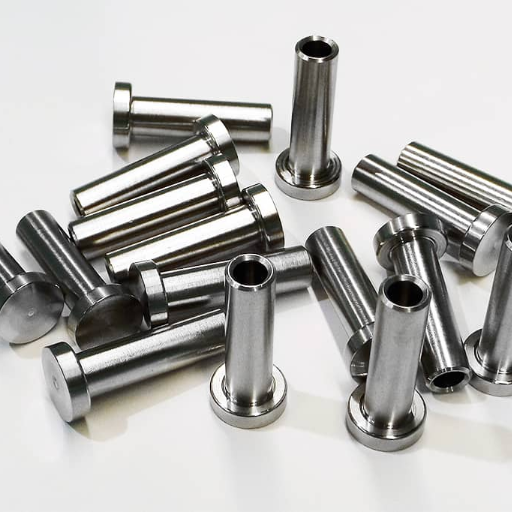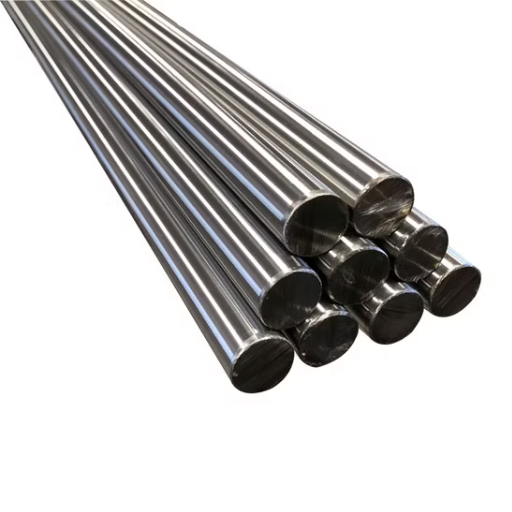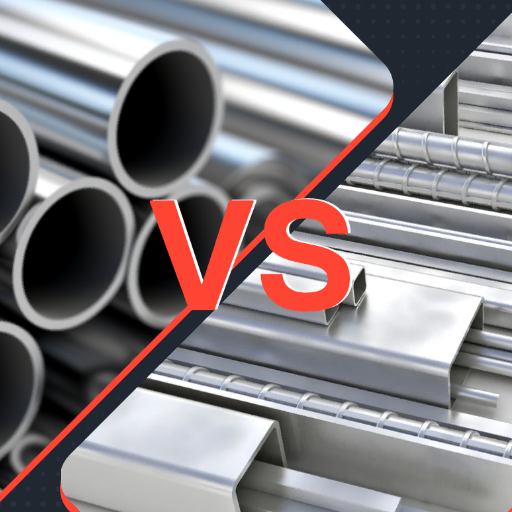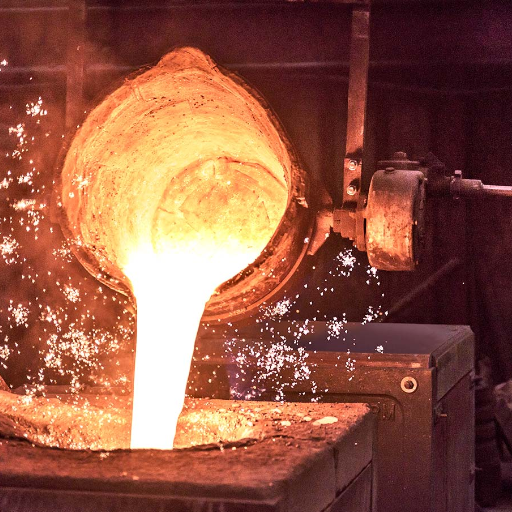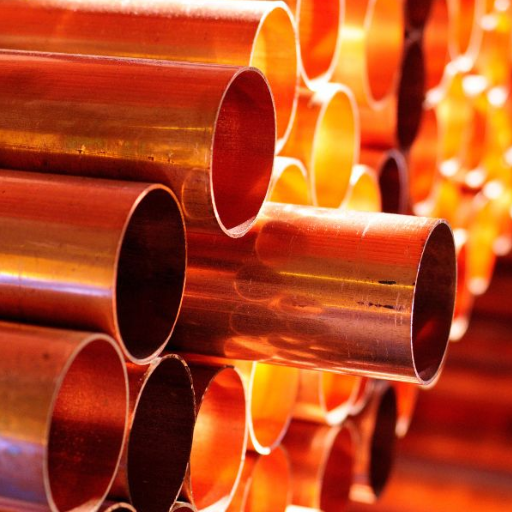Selecting the right metal for any project is very much a decision by the designer. The two metals might have seemed similar at first, but their different properties, compositions, and applications put the two in widespread use based on the differences-between: brass is the strongest and most versatile copper alloy made in the industry, whereas copper is the pure form with properties of electrical conductivity and resistance to corrosion. From an in-depth perspective, this guide equips engineers and designers, or even anyone interested in material properties, with a comparison of brass and copper. From physical properties to industry glasses, this article will guide you in making sound decisions pertaining to either of the two metals. Stay tuned to grasp the critical differences and understand how either would serve your needs.
Introduction to Brass and Copper

Brass and copper are considered the two metals that find widespread usage across industries. The distinction between copper and brass needs to be understood for placing the right material in different applications. Copper in its pure form is known for its electrical and thermal conductivity and thus finds its application in electrical wiring, plumbing, and heat exchanges. Brass, conversely, is the alloy of copper and zinc; this composition mellows strength, corrosion resistance, and machinability and gives it that characteristic golden sheen.
Overview of Copper and Brass
Widely known as the highest electrical conductor, it has a value of approximately 59.6 × 10^6 S/m at room temperature, making copper the main assignment in electrical and electronic components. It also ensures heavy use of heat exchangers and cooling systems, with a thermal conductivity translating at about 400 W/m·K. On the contrary, copper shows good malleability and ductility; hence it is processed into wires, sheets, and other forms without further losing integrity.
There is a wide spectrum of mechanical properties of brass, which is an alloy of copper and zinc, depending on its type and constituent amount. Usually, the more zinc there was in it, the harder and stronger the brass, some variations having tensile strengths up to 800 MPa. Brass further resists corrosion more than copper in moist atmospheric environments and saline surroundings, which brings it into use in marine hardware and plumbing fixtures. It is easier to machine than copper and thus chosen for applications involving precision machining. The golden color of brass leads to its artistic uses in architecture and packaging, where looks matter as much as engineering.
Historical Context of Usage
Brass could be dated at the beginning of the ancient ages, with the oldest known uses traceable into the Roman era. Historical records would suggest that brass was used mainly for coinage, jewelry, and decorative purposes because it was very attractive and practical. During the Middle Ages, due to the increase in metallurgical knowledge, brass production became more regulated. This brought in further applications in art, weapons, and musical instruments such as church organs and bells. Brass utilization gained its first great momentum in the Industrial Revolution, as there was a great demand for brass for use in manufacturing and engineering because it was durable and machinable.
With realized incorporations throughout several industries nowadays, brass keeps the torch burning for its ancestors, who have maintained an existence for centuries under diverse variants supported by modern technological enhancements. Studies of an analytical nature have therefore demonstrated the importance and indispensability of the alloy as a dual-purpose substance staining both sides of the spectrum of structural applications and aesthetic applications, particularly in automotive engineering, electrical systems, and sustainable water delivery systems. The prolonged and ever-changing functionality of this alloy ushers in an ever-relevant status of timeless value to adapt throughout human history easily.
Importance in Various Industries
Brass presents an inside view in underscoring its multiple applications in various industries, thus exhibiting advances in particular properties. In the fields of construction and plumbing, the production of pipes, valves, and fittings based largely on brass is of paramount significance due to its resistance to corrosion and durance against workability. These properties guarantee the durability of systems in handling fluids like water and other fluids.
Moreover, brass provides viable solutions in manufacturing of musical instruments like trumpet, trombone, and saxophone, thereby simultaneously improving sound delivery both with respect to definition and resonance. At par is the preference for the material in electronics for non-magnetic precision connectors and components which require stability and predictable conductivity. The bright, untarnished exteriors of the alloy make it highly popular for decorative uses—lighting fixtures to furniture accents. Copper’s extensive applicability shows the lasting relevance it finds in both functional and aesthetic aspects found in different industries.
Physical and Chemical Properties
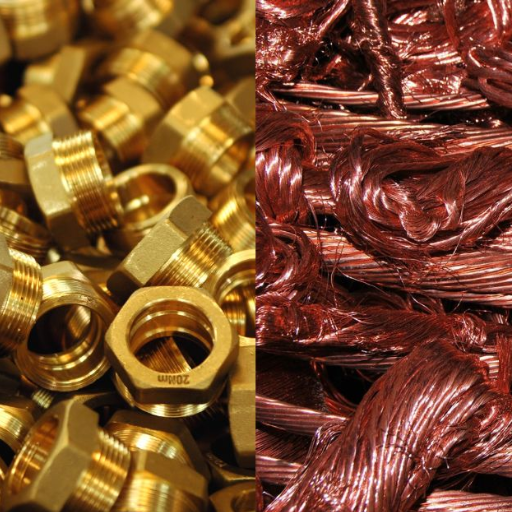
Brass is an alloy primarily of copper and zinc, and their specific proportions differ according to the properties to be attained. Physically, it is extremely ductile and malleable, thus easy to work and fabricate. It also has high tensile strength for use in numerous industrial applications. Chemically, it is highly corrosion resistant since a thin but dense protective oxide layer forms on the surface of brass, particularly in water-based environments. Its thermal and electrical conductivity is less than that of pure copper but still sufficiently suitable for many moderate conductive uses. These combined features make brass, a versatile, long-lasting material for practical and decorative applications.
Difference Between Brass and Copper
|
Parameter |
Brass |
Copper |
|---|---|---|
|
Composition |
Alloy of copper and zinc |
Pure elemental metal |
|
Color |
Yellowish-gold |
Reddish-brown |
|
Corrosion Resistance |
High due to protective oxide layer |
Moderate without protective coating |
|
Strength |
Stronger and harder than pure copper |
Softer and more malleable |
|
Thermal Conductivity |
Moderate |
Excellent |
|
Electrical Conductivity |
Lower than copper |
High |
|
Workability |
Easy to machine and cast |
Highly malleable and ductile |
|
Applications |
Musical instruments, hardware, plumbing |
Wiring, roofing, electronics |
|
Cost |
Generally less expensive than copper |
Typically more expensive over brass |
|
Weight |
Denser than copper |
Lighter than brass |
Unique Characteristics of Pure Copper
- High Electrical Conductivity
Pure copper allows a conductivity of nearly 5.96 × 10⁷ S/m under 20°C; hence, it ranks among the best conductors of electricity. It has free movement of electrons with the least level of impurities, thereby allowing efficient conduction of current.
- Exceptional Thermal Conductivity
With a thermal conductivity of nearly 398 W/m·K, pure copper is generous in heat transmission. This property makes it an essential component in heat exchangers, radiators, blower casings, or cooling systems.
- Corrosion Resistance
Pure copper, when exposed to air, naturally forms a layer of oxide which protects it from corrosion. It, therefore, is very resistant in non-acidic and low-sulfurous environments, thus giving a long life span to the objects into which it is used.
- Malleability and Ductility
Copper wire and sheet can be drawn or rolled out to extreme fineness. It may be deformed, however, without breaking, and this capacity for deformation while retaining tensile strength is very important for electrical wiring.
- Antimicrobial Properties
Copper kills upon contact a very large array of harmful microbes. This marvelous property is now exploited to a greater extent on high-touch copper surfaces like door handles in hospitals and public utilities to enhance hygiene.
- Aesthetic Appeal
Alloy Composition and Malleability
The prowess of copper alloys to have improved mechanical properties is broadly advantageous to the use of copper. The common copper alloys include brass-copper, zinc, and bronze with tin, and sometimes with a minor alloying of aluminum or nickel, etc. These increase mechanical properties like strength, corrosion resistance, machinability, strength, corrosion resistance, and machinability while still keeping copper’s own characteristic conductivity.
Another positive aspect of copper alloys is their malleability and ductility, making them very easily transformed into sheets, wire, or complicated components without any loss of structural character. For instance, the use of copper and its alloys is imperative within modern industrial technology, wherein copper alloys are used to fabricate complex parts for electrical equipment, aerospace, and precision engineering. This, together with a strong metallurgical composition and superior formability, endows copper alloys with indispensability to various technical and commercial fields.
Electrical and Mechanical Properties
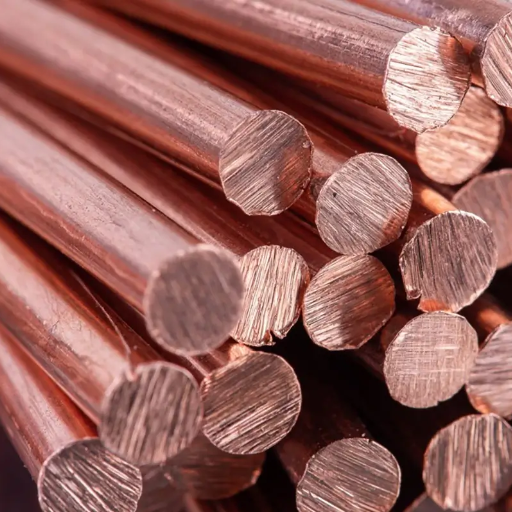
Copper alloys also offer the best electrical and mechanical properties, comprising advantages considered great for different factories. The electrical conductivity of copper alloy is high, second only to pure copper and thereby allowing for efficient conduction of electrical currents by systems and components of power. This has contributed greatly toward minimizing energy wastage and enhancing performance in electrical plants.
Conductivity Comparisons
When compared to conductivities, copper alloys continuously fall even ahead of each and every other metal due to their high electrical and thermal conductivities. Pure copper, for instance, offers an electrical conductivity value measured against the IACS standard (International Annealed Copper Standard) of approximately 100%, thereby setting the standard in the industry. Aluminum, although frequently employed for its lightweight nature, still only manages to offer the rank of a mere 61% IACS, which in conductance applications is far from considering the effectiveness of copper.
A further reason that limits the use of silver are its high prices and scant availability; indeed, it has the highest electrical conductivity of any known metal—an approximate 106% IACS. Copper alloys containing minuscule additions of tin or phosphorus also bestow a perfect balance of performance-win in strength without compromising the excellence in conductance. This comparison brings forth the copper alloys as the most favorable in industries pertaining to power distribution and electronics, as electrical wiring, where conductivity is paramount.
Mechanical Properties of Brass and Copper
Brass:
- Tensile Strength: Brass commonly ranges in tensile strength from 200 to 550 MPa, with different alloys and treatments suited for different applications. This allows the application of brass wherever moderate strength is required combined with ductility.
- Hardness: Brass hardness values may range from 55 to 90 on the Brinell hardness scale (BH), depending on the alloy type and whether it is annealed or hardened.
- Elastic Modulus: The elastic modulus of brass is approximately 100 GPa, offering it significant stiffness and resistance against deformation under stress.
- Ductility: Brazing is very ductile with elongation values between 20% and 60% and is therefore used very well in forming and fabrication.
- Corrosion Resistance: Brass stands out against corrosion, in particular, against water exposure and atmospheric moisture. Some grades are additionally designed to increase seawater resistance.
Copper:
- Tensile Strength: Pure copper has a tensile strength of around 210-400 MPa, depending on the degree of work hardening. The high tensile strength allows it to withhold mechanical stresses in many demanding applications.
- Hardness: The hardness values for pure copper, using the Brinell scale, typically range from 40 to 60 HB for annealed cathodes. It is possible for copper to be harder utilizing work hardening as well as through alloying.
- Elastic Modulus: Copper would be said to possess an elastic modulus value of anywhere from 110 to 130 GPa, providing it with slightly higher rigidity against deformation.
- Ductility: With elongation values regularly over 70%, copper maintains excellent ductility, fitting for fine-forming and bending and drawing processes.
- Corrosion Resistance: Copper generally falls under the category of corrosion-resistant metals for atmospheric corrosion and even under the corresponding categories for most instances of marine corrosion; with time, copper gives off a layer of its oxide to protect itself. This makes copper particular for corrosion resistance in electrical and plumbing applications.
Applications of Brass and Copper
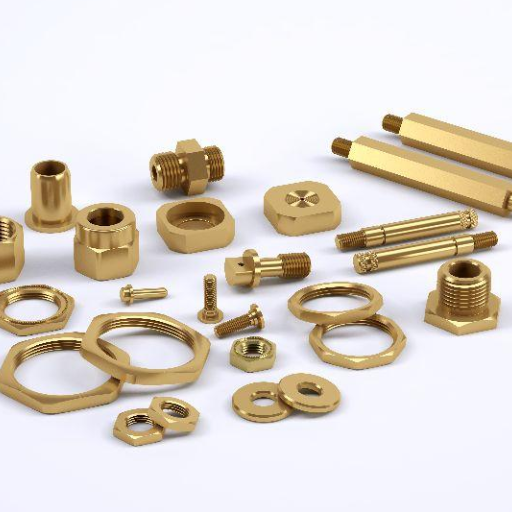
Applications of Brass:
- Plumbing and Fittings: The corrosion resistance and strength property of brass allows it to be used extensively in manufacture of valves, pipes, and other plumbing fixtures.
- Musical Instruments: Acoustic properties and workability render brass the material of choice for instruments such as trumpets and trombones.
- Decoration and Architecture: For brilliant decorative works, architectural components, and communes, the attractiveness of brass coupled with its resistance to tarnish, makes them acceptable.
Applications of Copper:
- Electrical Wiring and Conductors: Copper, due to its excellent conductivity, is used in wiring, circuit boards, and other electrical systems.
- Heat Exchangers: Being highly thermally conductive and resistant to corrosion, copper makes the best candidate for constructions that include radiators, heat sinks, etc.
- Roofing and Cladding: These will serve as weather coordination and durability protection materials for buildings.
Common Uses in Electrical Work
- Residential and Commercial Wiring: Copper is the standard in electrical wiring for home and commercial buildings, due to its excellent conductivity (59.6 × 10^6 S/m at 20°C) and low electrical resistance, which minimizes energy loss and thus helps in maximum energy distribution.
- Circuit Boards and Components: Considerable copper is used for conductive traces in the printed circuit board (PCBs). Copper ensures microscopic precision as well as conductive tracing of electrical signals across complex electronic systems.
- Electric Motors and Transformers: Copper windings in motors and transformers maximize energy efficiency and minimize heat generation, sales as copious amounts of energy mobilization lead to dismantling of huge amounts of heat. Increased effect can further reliance on copper heat-resisting factors to added duration.
- Busbars and Switchgear: Within the electrical panels and switchgear, copper busbars having a great current-carrying capacity for power distribution with maximum efficiency from a system or facility.
- Renewable Energy Systems: Solar panels and wind turbines use copper for their inverters, cable, and electrical connections for assured performances and efficient energy conversions.
Brass and Copper in Decorative Arts
Brass and copper have been coveted by the decorative art field for centuries for their uncommon marital beauty combinations: copper-type hues, accentuated by a natural patina, to adorn decoration works generally considered ornamental in metalwork: sculpture, jewelry, interior accents. Brass, being essentially an alloy of copper and zinc, commands a high reputation for its bright gold lustre, excellent malleability, and good resistance to tarnish, which comes into maximum use in making intricate furniture accents, lighting fixtures, and architectural details.
These metals share a reputation as the best in retaining their timeless nature while remaining adaptable to contemporary design applications. For example, brass is often found in mid-century modern and industrial design, wandering between bare and robust design elements with its daughter metallic lustre. Copper, conversely, is considered rustic or eclectic interiors, where its evolving patina acts as dynamic, ever-changing visual texture.
Choosing Between Brass and Copper

The correct choice should be made depending on the given application and properties needed. Copper is high in performance when it comes to conducting heat and electricity, and hence it can be used for electrical wiring and plumbing. It also makes good antimicrobial substances that find applications in hygiene, including kitchen countertops. Brass is stronger though less conductive and resistant to corrosion; its golden color attracts general use in decoration as well as hardware. Although very workable and recyclable, copper is mostly a metal of function, while brass is usually selected where strength and aesthetics are required.
Factors to Consider for Specific Needs
- Thermal Conductivity
- Copper is an excellent thermal conductor with a thermal conductivity rate of about 398 W/m·K: applications such as heat exchange, perfection, and electrical wiring are obvious, where conduction must be swift.
- Brass is invariably less suitable for heat-related applications with a thermal conductivity of approximately 109 W/m·K; such a level is adequate only for applications where heat transfer is not an important consideration.
- Corrosion Resistance
- Copper and brass possess good resistance to corrosion; nevertheless, brass can resist pitting and dezincification better than copper in most environments. The aforesaid characteristic entails the use of brass as marine hardware or components exposed to water and moisture.
- Mechanical Strength
- Brass has a higher tensile strength of grant of about 500 MPa, while copper only ranges from 200-250 MPa. Due either to its affordable strength or its necessary enduring sheathing strength, brass hardware is commonly used.
- Aesthetic Appeal
- Brass has the true hue of gold and is purposely used in the production of fixtures, apparel, and musical instruments. Copper with its reddish hue, will in due course receive patina with all its applications that lean in the direction of a rustic or aged look.
- Electrical Conductivity
- Copper is the preferred material in electrical cables, transformers, and power transmission systems because it has an electrical conductivity level of about 58 MS/m. On the other hand, brass, with lesser electrical conductivity (about 15 MS/m), is preferably used in connectors and terminals where appearance or mechanical strength is important.
Final Tips for Material Selection
- Mechanical Properties
- Corrosion Resistance
Consider any abnormal environmental situations that the material might be confronted with in actual service conditions. Brass stands up extremely well against corrosion in wet and mild acid environments. It also resists corrosion, but it will do well with a patina, which alters its appearance, sometimes even forming a protective level.
- Thermal and Electrical Conductivity
- Cost Efficiency
Price based on weight or per-project analysis should be made. Copper is generally costlier than brass, given its purity and superior properties. For large applications, hybrid solutions or alloying may be considered to optimize between performance and price.
- Aesthetic Requirements
Reference Sources
1. Protective Ability of Volatile Inhibitors in Atmospheric Corrosion of Brass and Copper
- Key Findings: This study evaluated the effectiveness of volatile corrosion inhibitors (VCIs) in protecting brass and copper under atmospheric conditions with high concentrations of CO₂, NH₃, and H₂S. The inhibitor IFKhAN-114 showed the highest protective efficiency (96% for brass and 95% for copper) by hindering anodic reactions and preventing local damage.
2. Designing a Catalog for MSME Metal Crafts in Fancy Copper
- Key Findings: This study focused on creating a product catalog for an MSME specializing in copper and brass crafts. The catalog improved branding and marketing, leading to increased sales and international market reach.
3. Copper and Human Health: A Review
- Key Findings: The review highlighted the dual role of copper as an essential trace element and a potential health hazard. Excessive copper exposure can lead to toxicity, while deficiency affects neurological and cardiovascular health.
Frequently Asked Questions (FAQs)
Q: Difference Between Brass and Copper: What You Need to Know
A: When comparing brass and copper, it’s essential to understand their unique properties and applications. Brass is an alloy composed of copper and zinc, while copper is a pure metal known for its reddish-brown hue and exceptional electrical conductivity. The difference between copper and brass lies in their composition and performance characteristics. Copper has a higher thermal and electrical conductivity compared to brass, making it the preferred choice for electrical components. On the other hand, brass retains some of the beneficial properties of copper while adding strength and corrosion resistance due to the presence of zinc. This combination of copper and zinc allows brass to be used in various industrial and consumer goods.
Q: What Are the Mechanical Properties of Brass Compared to Copper?
A: The mechanical properties of brass and copper differ significantly, influencing their applications. Brass is often used in settings where strength and durability are essential, such as in electrical connectors and plumbing fixtures. In contrast, pure copper has a higher tensile strength and is more malleable, making it suitable for applications requiring flexibility. The distinct differences in mechanical properties come from the alloying elements; brass alloys can be tailored for specific uses, providing a balance between strength and workability. While brass retains some of copper’s unique properties, its composition allows for enhanced resistance to corrosion and wear. Therefore, choosing between brass or copper depends on the specific requirements of the project.
Q: How Does Copper’s Strength Compare to Brass?
A: Copper’s strength is often considered superior to that of brass, especially in terms of tensile strength and ductility. Pure copper has a high capacity for deformation without breaking, making it ideal for applications where flexibility is crucial. However, brass is an alloy that also offers considerable strength, primarily due to its zinc content. This combination of copper and zinc provides a balance of hardness and malleability, allowing brass to be used effectively in many applications. While copper’s strength is notable, the enhanced durability of brass makes it a preferred choice for applications that require resistance to wear and corrosion. Therefore, the decision between copper and brass should consider the specific mechanical properties required for the intended use.
Q: What is the Difference Between Copper and Brass in Corrosion Resistance?
A: The difference between copper and brass in terms of corrosion resistance is significant. Copper is known for its corrosion resistance, but it can still tarnish and develop a patina over time. Brass, being an alloy composed of copper and zinc, exhibits improved corrosion resistance due to the zinc content, making it a popular choice in environments exposed to moisture and chemicals. This enhanced corrosion resistance allows brass to be used in healthcare settings and other applications where exposure to harsh conditions is expected. Additionally, the presence of zinc in brass helps prevent pitting and wearing, extending the lifespan of the material. Thus, for applications where longevity and corrosion resistance are vital, brass may be the superior option.
Q: Why Choose Brass for Electrical Applications Over Copper?
A: Brass is often chosen for electrical applications over copper due to its unique properties and advantages. While copper has exceptional electrical conductivity, brass alloys can provide better mechanical strength and resistance to corrosion, making them suitable for electrical connectors and components. The combination of copper and zinc in brass results in a material that retains good electrical conductivity while offering enhanced durability. This makes brass a preferred choice for projects that require reliable performance in demanding environments. Furthermore, the lower cost of brass compared to pure copper can also influence the decision to use brass in electrical applications. Overall, the choice between brass and copper hinges on balancing conductivity, strength, and cost for specific applications.

